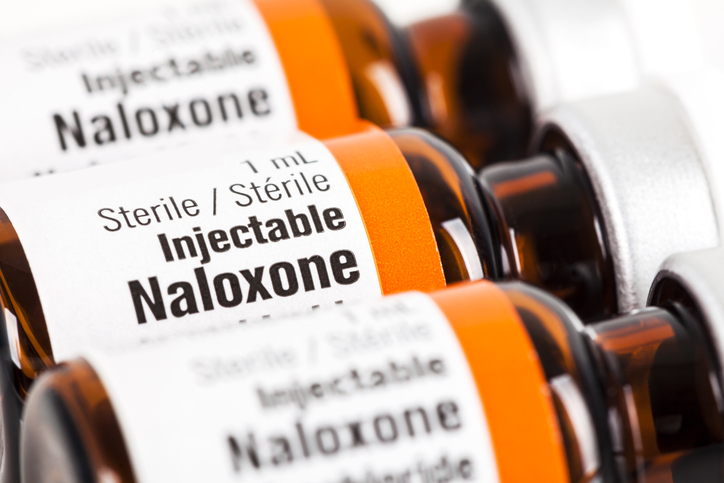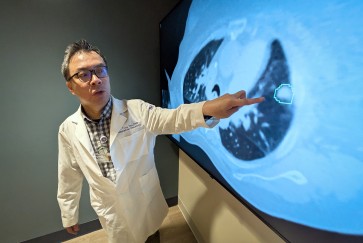More than 75% of people in Illinois who die from an opioid overdose do so before emergency personnel can make it to the overdose scene, a new Northwestern Medicine study found. These deaths occur in peoples’ homes, hotels, public spaces or abandoned properties.
“If we really want to save peoples’ lives, we can’t wait until Emergency Medical Services arrive at the overdose scene,” said corresponding author Joe Feinglass, research professor of medicine and preventive medicine at Northwestern University Feinberg School of Medicine.
Illinois needs to provide overdose prevention sites where those seeking to use opioids can do so in a clean, safe environment with quick access to life-saving drugs such as naloxone (brand name Narcan), the study authors said. These buildings provide clean supplies like syringes to prevent HIV and hepatitis C transmission and simple on-site testing services to determine whether drugs are contaminated by fentanyl or other dangerous additives.
“The preponderance of community deaths speaks to the urgent need to decriminalize illicit drug use, which could reduce fatal overdoses and allow those suffering from substance use to seek treatment more freely,” Feinglass said. “Establishment of supervised consumption sites may have the biggest impact in reducing overdose deaths.”
The study was published March 8 in the journal Public Health Reports. The researchers analyzed 2,833 opioid-involved overdose deaths in 34 counties in Illinois from the Statewide Unintentional Drug Overdose Reporting System (SUDORS) for 18 months in 2017-2018.
The study is one of two new Northwestern papers that provide a fuller picture of the burden of the opioid epidemic on the state’s hospital systems.
In the second study, authors show that between 2016 and 2019, more than 239,000 opioid-related hospital visits in Illinois accounted for over $5 billion in total charges and more than 710,000 days of inpatient care. More than 75% of opioid-related hospital costs were covered by public insurance such as Medicaid or Medicare disability, according to the findings.
“The public knows about opioid-related deaths, but they often don’t know about this much larger story of the wide impact of the opioid epidemic on the hospital system and public and taxpayer finances,” Feinglass said. “By not handling the opioid epidemic, we’re all paying for this care.”
Hospital visits in lower income areas
This study, published Jan. 27 in the Journal of Behavioral Health Services, analyzed trends in hospital emergency room visits and admissions for patients with opioid use, abuse, dependence or overdose seen at 214 hospitals in Illinois from 2016-2018.
While people typically focus on opioid overdoses and deaths as the leading problem in the opioid epidemic, the study reports less than 20% of the visits involved an overdose, and less than 1% resulted in death. The other visits involved patients who sought care for medical reasons often directly associated with their opioid use or abuse or needed mental health help.
“Opioid-related deaths and overdoses are the tip of the iceberg,” Feinglass said. “If you’re using needles, you could get infections including HIV. So many opioid-related hospital visits are people with infections, pneumonia, chronic illness or ulcers.”
The hospital data in the study indicated hospital use for the opioid epidemic in Illinois is primarily based in lower income areas of the Chicago metropolitan area, among populations with the least access to high-quality treatment programs. Hospital-use rates were heaviest for disproportionately Millennial, male and minority populations.
Speed is key to overdose prevention
Groups like The Chicago Recovery Alliance, a non-profit organization that provides syringe exchange and overdose prevention services to Chicagoans, give community members naloxone and teach them how to use it, but overdose prevention sites would provide safer places to use drugs than the isolated locations where many overdose deaths occur. Overdose prevention sites also have trained staff who can quickly administer naloxone and can connect people with social resources and medical treatment opportunities to aid in their recovery from their opioid addiction.
How Illinois can better respond
In addition to decriminalizing addiction and introducing overdose prevention sites, the study authors suggested the following state responses:
- Physicians should work to stop or limit long-term, non-cancer-related opioid prescriptions for chronic pain
- Insurance coverage for non-pharmacological pain management should be increased
- Those who survive non-fatal overdoses need better referrals to seek treatment for their addiction
- Buprenorphine treatment for opioid addiction should become more easily available through better training for primary care providers, including at federally qualified health centers
“Effective addiction treatment must go beyond ‘detox’ programs to recovery programs based on integrated mental health care, medically assisted treatment, post-discharge patient navigation and ‘wrap-around’ social services related to housing, employment and childcare,” Feinglass said.
Other Northwestern authors include senior author Maryann Mason, Garth Walker, Kelsey Rydland, Robert Tessier, Rushmin Khazanchi. Dr. Howard Kim, Jessica Wang and Jiancheng Ye.


